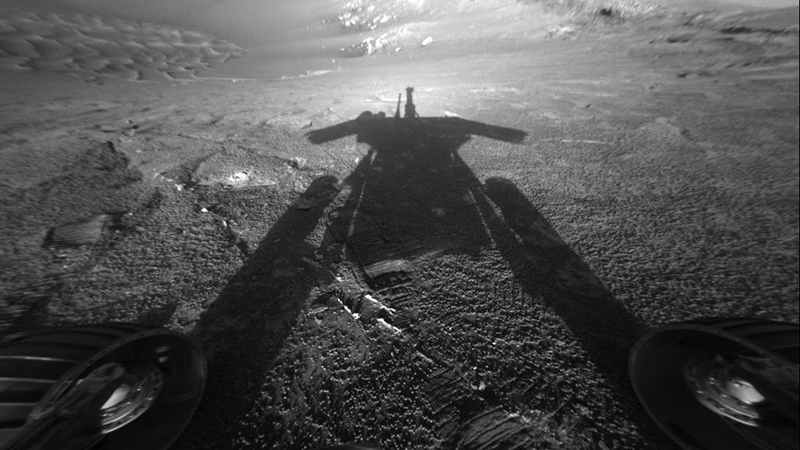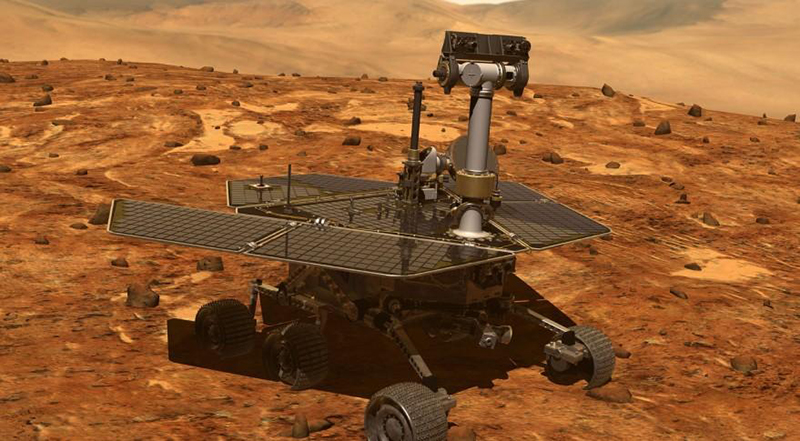After exploring Mars for almost 15 years, the Opportunity rover has roved its last. In February 2019, NASA announced the end of any further attempts to communicate with the machine, which has been unresponsive since stricken by a planet-wide dust storm in July 2018. The thick dust in the Martian atmosphere blotted out the Sun, choking off Opportunity's solar power supply and likely leaving the rover unable to recharge its batteries enough to awaken from "sleep" mode. See also: Atmosphere; Battery; Dust storm; Mars; Planet; Solar cell; Solar system; Space communications; Sun

Opportunity originally landed on Mars on January 24, 2004, in the Meridiani Planum region near the planet's equator. Its arrival was precded by its sister rover, Spirit, which touched down on January 4, 2004, in Gusev Crater, likewise located near the equator but clear on the other side of the Red Planet. These robotic probes—collectively called the Mars Exploration Rovers—had an initially planned operational lifetime of only 90 days. Both vastly exceeded this mark, with Spirit ultimately covering nearly 8 km (5 mi) before it became stuck in sand in May 2009; the rover last phoned home in March 2010. Opportunity fared even better, covering more than 45 km (28 mi) before its demise. See also: Electronics; Sand; Temperature

The Mars Exploration Rovers accomplished their mission of geologically characterizing rocks and soils to learn more about the history of Mars. A suite of instruments including cameras, spectrometers, microscopes, and rock abrasion tools probed and analyzed the chemistries and appearances of materials on the Martian surface. The rovers found signs of past water activity, revealed through mineral compositions, dovetailing with other evidence that Mars hosted a warmer, wetter climate in the first billion of its 4.5-billion-year existence. The possibility of a Red Planet friendlier to life than the cold desert it is now has long intrigued scientists. During its travels, Opportunity bolstered this case for early Martian habitability by discovering clay minerals that form in the presence of water possessing a neutral pH—a type of environment suitable for microbial life. See also: Astrobiology; Biology; Chemistry; Clay; Climatology; Geology; How spectroscopy relates to spectrometry; Mineral; pH; Water
Although Opportunity's adventure has come to an end, the science program at the Red Planet remains robust. Numerous satellites encircle Mars, such as the Mars Reconnaissance Orbiter and MAVEN. The Curiosity rover, a machine the size of a small car, continues its trek on Mars, having covered more than 20 km (12 miles) since landing in August 2012. In November 2018, the newest Mars explorer, InSight, arrived. This lander mission is using a seismometer and a "mole" heat probe digging down 5 m (16 ft) into the Martian ground to study the planet's interior. Meanwhile, yet another rover is in the works, for now called the Mars 2020 Rover, based on its anticipated arrival year. See also: Satellite (spacecraft); Seismology; The InSight mission to Mars begins





